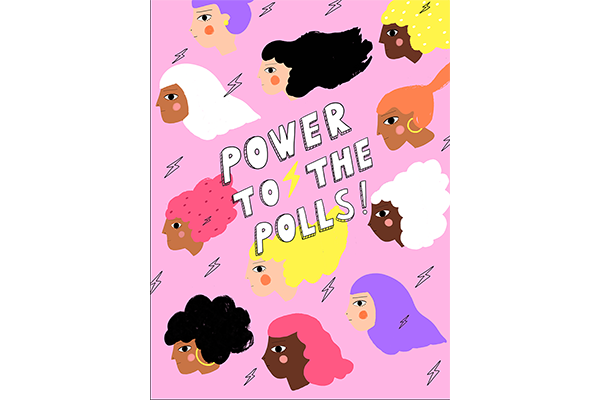This year brought about record-high turnout in US midterm elections and landmark democracy-protecting initiatives across North America. With increased attention on gerrymandering and suppression ploys, 2018 might be dubbed the Year of the Voter.
In Cascadia, talk of voting reform revolved around removing hurdles for participation and clearing the way for upgraded, fairer systems.
Proportional Representation
That’s a lot of syllables to convey a simple idea: a system where everyone’s vote matters. In our foundational piece on proportional representation (also known as ProRep or PR) we outlined how this voting system uses larger, multi-winner districts and upgraded ballots to elect candidates and parties in proportion to the votes they earn.
Why was it something Sightline focused on so much 2018? Well, because it’s an antidote to what ails the current winner-take-all systems used by Canada and the United States (as well as the United Kingdom and France). Here’s the gist:
- It tames gerrymandering
- It helps voters hold representatives accountable
- It loosens big money’s grip on parties and policymaking
- Lawmakers are compelled to work together to create stable, popular policies
- It boosts turnout and participation
To put those benefits in concrete terms, we did a series on what ProRep would look like in Washington State. The series goes to show that Washington has several options, including using fewer but larger districts, or combining the state House and Senate, in order to provide voters with a fairer, more representative government.
Of anywhere in Cascadia, British Columbia made the biggest bid for major voter reform in 2018. The province floated a referendum to switch from First-Past-the-Post to ProRep, but the initiative floundered, not least because the ballot question put reform at a disadvantage from the outset. Voters opted 61 percent to 39 percent to stick with the status quo.
Better Democracy For All
But proportional representation wasn’t the big democracy reform campaign of the year. Voters across the US got to consider other alternative voting methods this year.
Sightline took a look at some of these methods in a four-part series examining how to empower and amplify more voters’ voices, especially for women, people of color, and other underrepresented groups.
The map below shows 321 places in the United States where cumulative, limited, or ranked-choice voting (not including states that use IRV for overseas voters) was in use as of November 2017. Each map marker indicates one of these places and represents both the type and status of the jurisdiction’s voting system.
Fair voting methods—particularly multi-winner elections paired with proportional voting—provide a more robust solution to the problem of underrepresentation of people of color both at the polls and in elected offices. A few important takeaways from this research:
- Voters aren’t to blame for low turnout—it’s the system. And better solutions are out there.
- Places that adopt ranked-choice voting* see major upticks in voter participation
- Hurdles with alternative voting systems and are they worth it?
- Voting reform in Amarillo, Texas, results in more diverse and representative local governments
*2018 was the first time ranked-choice voting (RCV) was used by an entire US state (Maine) to elect a candidate for a federal office. RCV is a method that allows voters to rank candidates in order of their preference.
Washington Voting Wins of 2018
Washington became the 12th US jurisdiction to pass automatic voter registration legislation, putting the state in good company with the rest of Cascadia—Oregon was the first and Alaska the sixth.
Other wins for Evergreen State voters include same-day voter registration, the passage of the Washington Voting Rights Act, and the introduction of a Washington local options bill, which would free jurisdictions to change their local voting methods by allowing the choice to eliminate primaries and elect representatives in multi-winner races, among other things.
Preview of 2019
Speaking of the Washington local options bill, we’ll likely see it again in the upcoming legislative session. After all, the path to electoral reform in Washington, DC, leads through the states, and the states are right now constrained by statewide laws requiring a primary.
The Local Options Bill will likely closely echo the one introduced last session. It would free cities, counties, and school boards to decide whether to employ a voting system that better meets their objectives. Specifically, local jurisdictions could choose:
To eliminate the primary election and use ranked-choice voting in a single high-turnout general election. To use proportional representation ensures local elected officials reflect the diversity of voters in values, party affiliation, ideology, race, ethnicity, and gender.
Read more about the local options bill.
Want to follow along with democracy reform news? Sign up for our newsletter. (We send it out a few times a month and we promise not to spam your inbox or ever share your information with anyone.)









